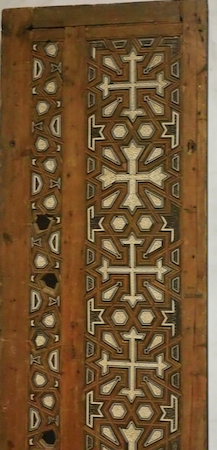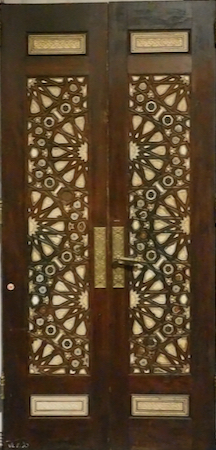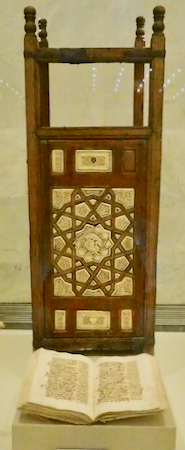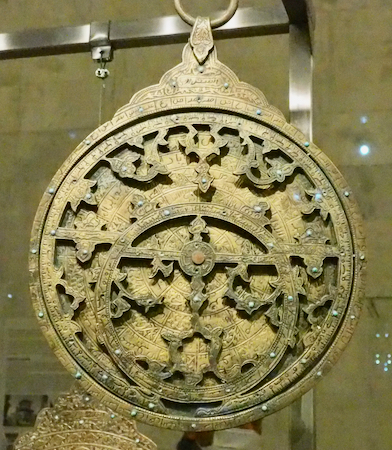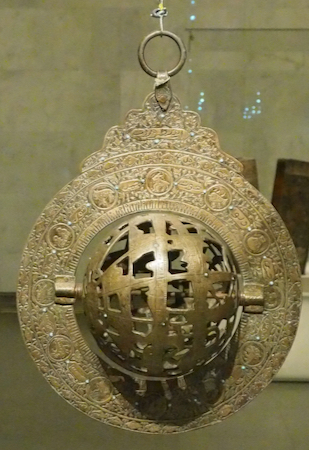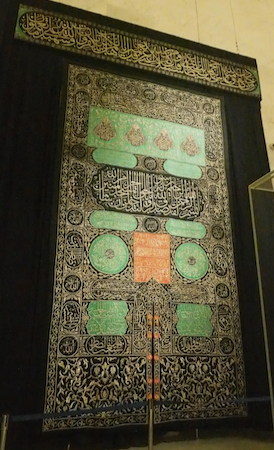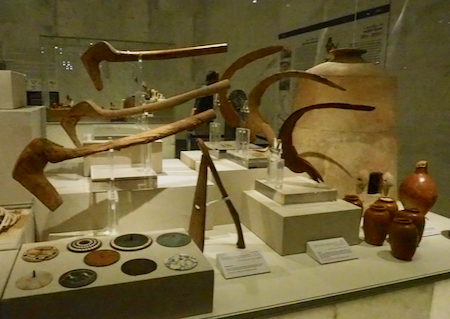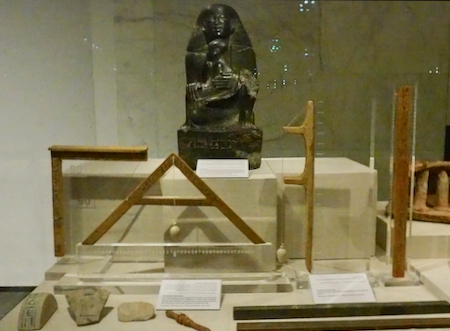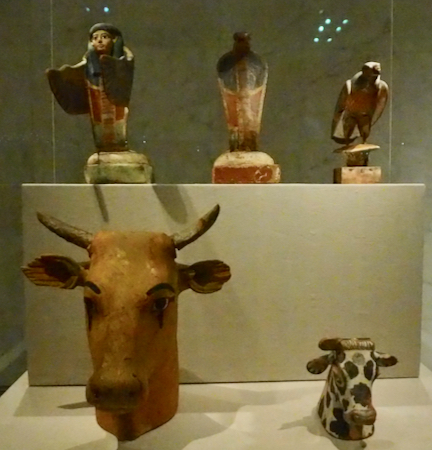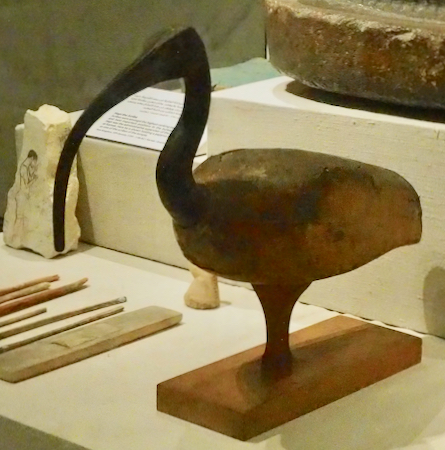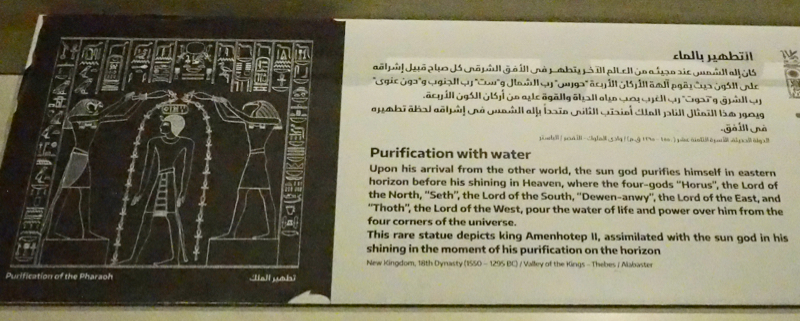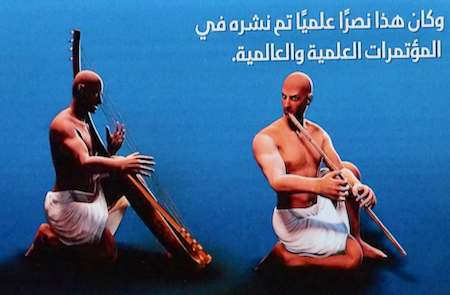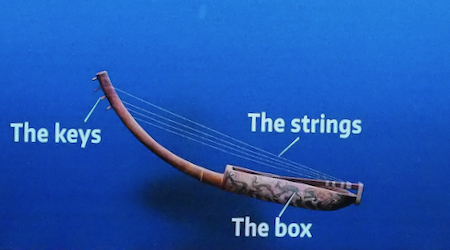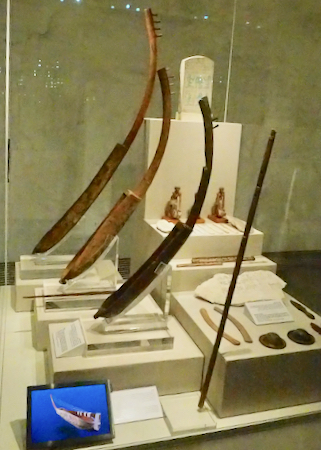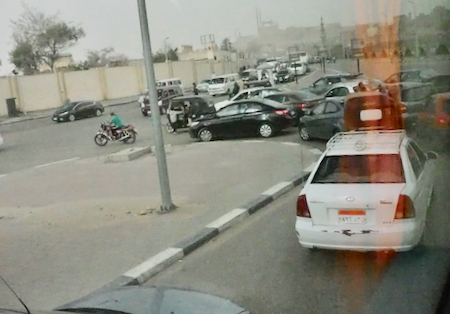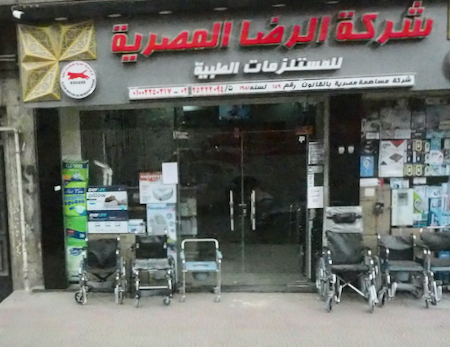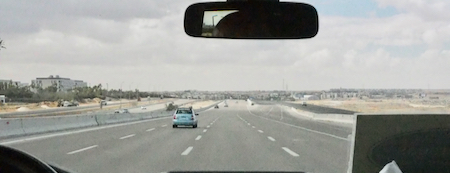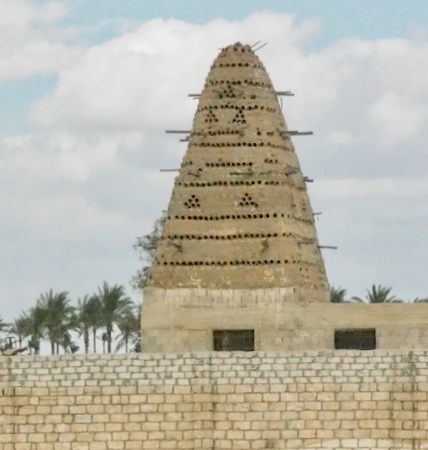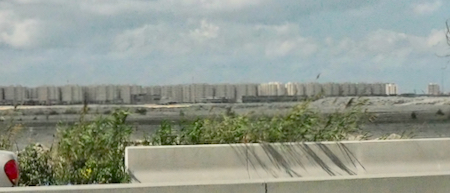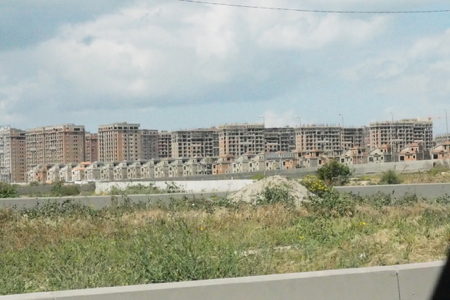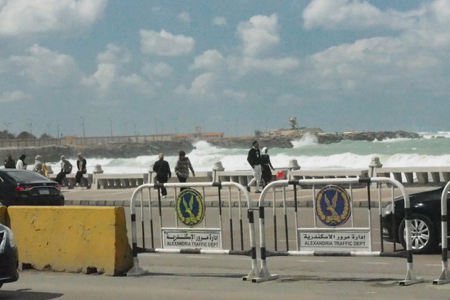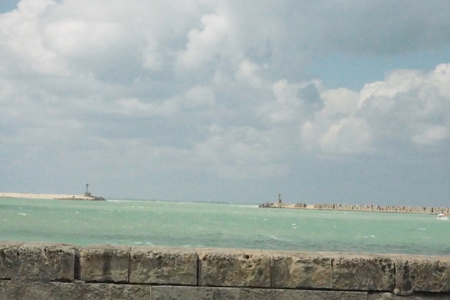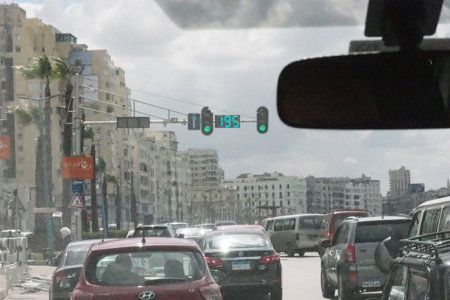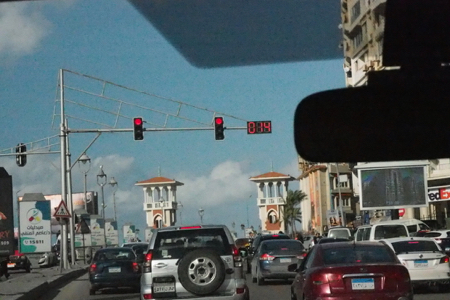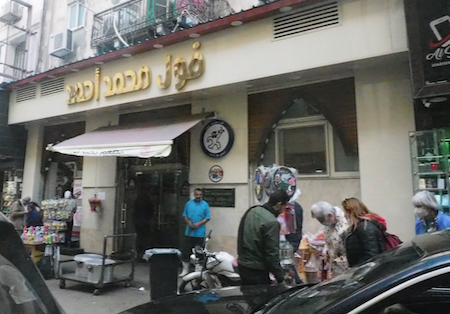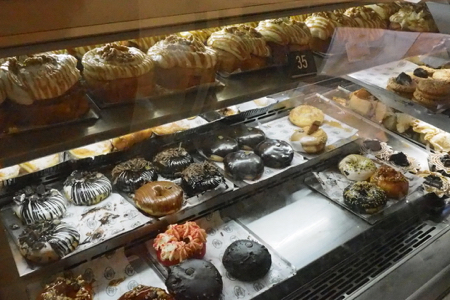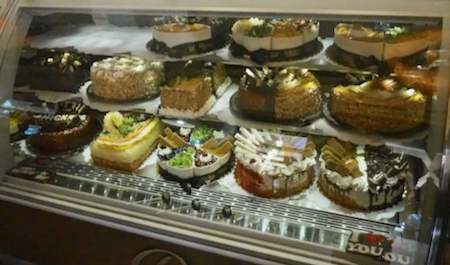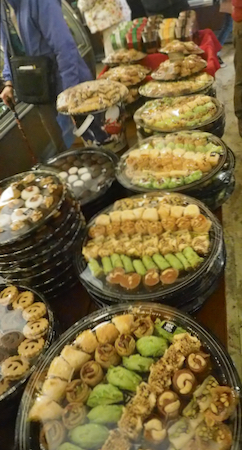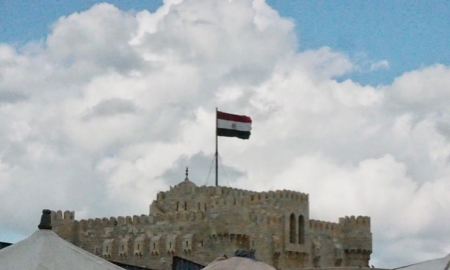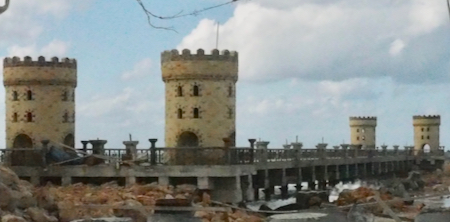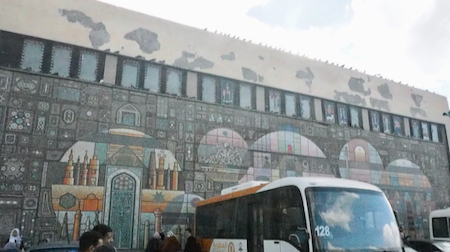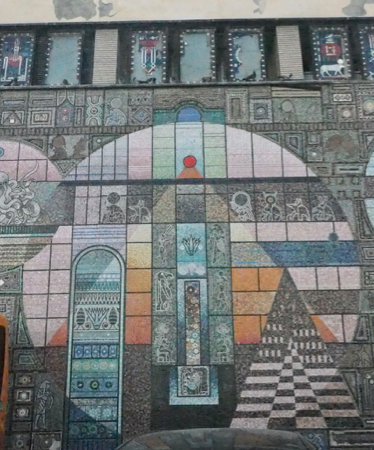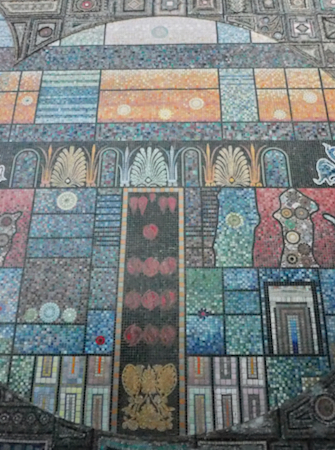The National Museum of Egyptian Civilization (NMEC) was a highlight of the trip. The museum is built on a large site with gardens - trees and grass - in the desert. The lower floor is called the Hall of Mummies. Twenty-two mummies (18 kings and 4 queens) were moved from the Cairo Museum to the new NMEC in a grand procession in April 2021 (be sure to look at the excerpt from the actual parade). The Hall contains 20 mummies and their coffins enclosed in glass environmentally controlled cases (two will be rotated in and out). We wandered through looking at the remains of Queens Hatshepsut, Tiye, Meritamun, and Ahmose Nefertari (wife of King Ahmose I), and kings Amenhotep I, II, and III; Thutmose I, II, III and IV; Seti I and II, Rameses II, III, IV, V, VI, and IX; Seqenenre Tao; Merenptah; and Siptah. What a collection! (No photos allowed.)
The upper floor was more cheerful with lots of space and signs in Arabic and English. Even with crowds of tour groups and school kids, we had no trouble seeing everything. The following caught my interest: an Epaggelia (a box that is a “place of the Bible”), Oriel windows with Islamic designs, 4th c. CE astrolabes use to find planets and latitude from the North Star (Polaris), wood mattocks, bread making equipment, architect’s plumb lines and squares, protective goddesses, scribes instruments, a story written on old papyrus, Egyptian chair design, one of the oldest Egyptian board games called Senet, several musical instruments - mainly harps and flutes (4 string harps, and a 95 cm flute played almost vertically), medical instruments, weights for scales, and models of Nile barges.
Inlaid wood - Coptic art
Inlaid wood - Coptic art
Inlaid wood - Coptic art
Astrolabe
Door
Agricultural tools - Mattocks and sickles
Construction tools
Models of ancient Egyptian boats
Musical Instruments display
Harp and long Flute
Harp
Harps and one long Flute
After the museum visit, the ride to the hotel was through the usual horrendous traffic and honking horns. Cars in Egypt are expensive. A small cheap Kia costs $25,000 US and the tax on it is 200%! How can so many people afford them? Few of them do not have scratches and dents.
Traffic
Tea vendor
Store for medical equipment
Fri., 3/11/22 - Cairo to Alexandria (Post Trip Extension)
Today we began our post trip extension to Alexandria. There are only three of us (Marge, Barbara, and me) and Mona is still our guide. Our vehicle is a small (16-passenger) van but we each have two seats so it is very roomy. Egypt has built a new toll road from Cairo to Alexandria so the drive was quick - less than three hours - through larger fields and a greater variety of crops: oranges, small mangoes, vineyards, tomatoes, green houses, and plastic covered crops.Alexandria is on the Mediterranean Sea. It is the third largest city in Egypt and it has moved most industries out of the city. Some of the industries are: food processing, auto assembly, textiles (cotton and flax), and oil refining. The city was founded in 331 BCE by Alexander the Great when he came across northern Africa chasing Persians. The area had two natural harbors and an island between them which he built up like a causeway. Alexander laid out streets in a grid and channeled water from the Nile to supply the city. Then came a succession of conquerors.
Entry to the city was past irrigation overflow lakes. Alexandria once had more foreigners living there than Egyptians. The foreigners have left their influence on the city’s food, art, culture, and architecture. The Brits built the tramway which still runs with old European trains/trollies and they built the canals for irrigation from the Nile. We went to lunch at a local, truly Egyptian, restaurant. The meal included falafel, omelette, lentil soup, eggplant, beans, pickled turnip and beets, tahini and humus with pita bread. We all shared.
After lunch we walked to Delice’s for dessert. What a find! It put Sacher Torte to shame. Marge and I shared a huge cinnamon bun with gooey icing and pecans and French press coffees for less than $8! Both places were crowded with locals.
Nice, new toll road and almost no traffic
Pigeon towers
Pigeon tower
Covered crops
Apartment buildings
More apartment buildings
The Med was a little angry today - very windy and chilly
Harbor entrance
A real signal light! Nearly the first we have seen in Egypt
This one was red and the cars stopped!
Lunch
Outside of the restaurant
Really hard to choose what to get!!
A huge cinnamon bun with gooey icing and pecans
We ate it all!
After dessert, we went to the Qaitbay Citadel built by the Circassian Mameluke Sultan in 1477 to defend against the Turks. It was an important defense to protect the trade route from the Mediterranean to the Red Sea. We walked along the sea looking at stalls full of souvenirs and all kinds of sea shells - huge conch shells and clam shells and star fish.
Qaitbay Citadel
Qaitbay Citadel flying the Egyptian flag - very windy
Qaitbay Citadel
Piles of shells
At the end of the row of vendors, was a building wall completely covered in mosaic designs and pictures made from recycled sea shells. It was beautiful.
After our Qaitbay tour we checked into our hotel, Helnan Palestine Hotel on the grounds of the Montaza Palace and its royal gardens. The royal palace is no longer in use. The grounds are under reconstruction but will one day look beautiful again and be open for the public to enjoy. We have a wonderful view of the Mediterranean Sea and the Palace. Dinner was salad and steak and ice cream in the hotel restaurant.
The wind is strong and the sea has white caps and waves. It is only 59° but lots of people are out enjoying the weekend, Friday and Saturday in Arab countries.
| Return to Top | Return to Itinerary | Return to Trips page to view other trips | Return to Dreamcatcher Home Page |

